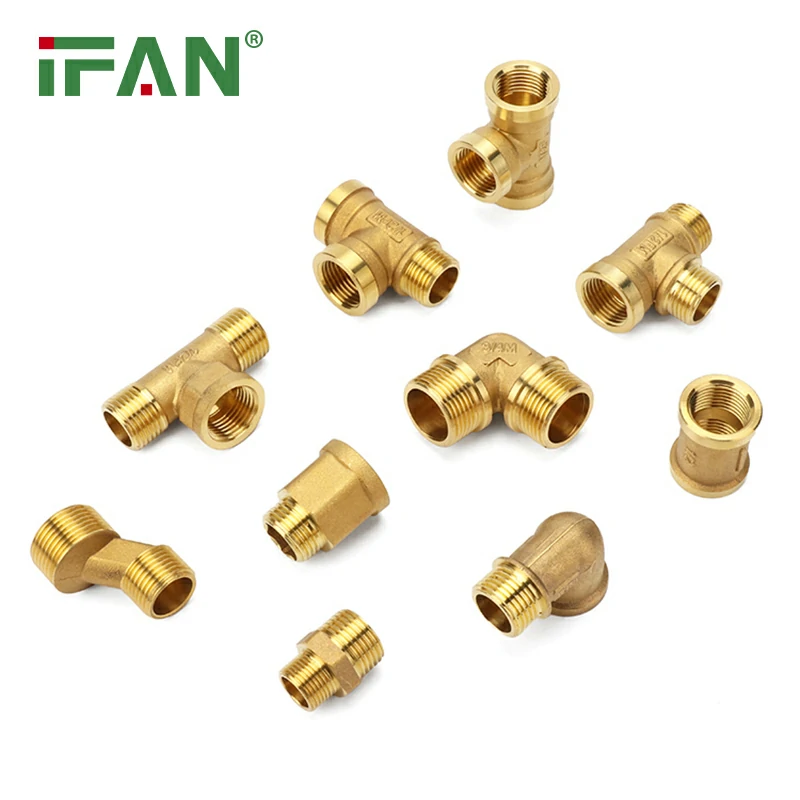Brass fittings have long been a staple in plumbing systems, valued for their durability and resistance to corrosion. However, recent concerns have emerged regarding the leaching of lead from brass fittings, particularly in drinking fountains. This article delves into the issue of lead leaching, its implications for public health, and why daily use in households may pose an even greater concern.

Understanding Brass Fittings
What are Brass Fittings?
Brass fittings are plumbing components made from an alloy of copper and zinc, often with small amounts of lead added to enhance machinability. These fittings are used to connect pipes, valves, and other equipment in various applications, including residential, commercial, and industrial settings.
Importance of Brass Fittings in Plumbing
Brass fittings are favored in plumbing systems due to their strength, resistance to corrosion, and ability to withstand high pressures and temperatures. They are commonly used in water supply lines, heating systems, and gas connections. However, the presence of lead in brass fittings has raised serious health concerns, particularly regarding drinking water quality.
The Issue of Lead Leaching
What is Lead Leaching?
Lead leaching occurs when lead from brass fittings dissolves into water, contaminating the water supply. This process can be exacerbated by factors such as water temperature, pH levels, and the duration of water contact with the fittings. In drinking fountains, where water is often stagnant for extended periods, the risk of lead leaching increases.
Health Risks Associated with Lead Exposure
Lead is a toxic metal that can have severe health effects, particularly for vulnerable populations such as children and pregnant women. Exposure to lead can result in:
- Neurological Damage: Lead exposure is linked to developmental delays, reduced IQ, and behavioral issues in children.
- Cardiovascular Problems: In adults, lead exposure can increase the risk of hypertension and cardiovascular disease.
- Kidney Damage: Chronic exposure to lead can lead to kidney dysfunction and other health issues.
Brass Fittings in Drinking Fountains
Lead Leaching in Public Spaces
Drinking fountains in schools, parks, and public buildings often utilize brass fittings. Studies have shown that these fittings can leach lead into the water, raising concerns about the safety of drinking water in public spaces. While regulations exist to limit lead levels in drinking water, the presence of lead in brass fittings can complicate compliance.
Regulatory Standards
In response to concerns about lead in drinking water, various regulations have been enacted. For example, the Safe Drinking Water Act (SDWA) in the United States sets standards for lead levels in drinking water. Additionally, the Reduction of Lead in Drinking Water Act mandates that plumbing fixtures, including brass fittings, contain no more than 0.25% lead by weight.
Daily Use in Households: A Larger Concern
Household Plumbing Systems
While drinking fountains are a significant concern, the daily use of brass fittings in household plumbing systems presents an even larger risk. Many homes still utilize brass fittings in their water supply lines, which can lead to prolonged exposure to lead-contaminated water.
Factors Contributing to Lead Leaching in Households
- Stagnant Water: Water that sits in pipes for extended periods can absorb more lead, especially in older homes where plumbing systems may not be updated.
- Water Chemistry: The pH level and mineral content of water can influence the leaching of lead from brass fittings. Acidic or soft water tends to leach more lead.
- Temperature: Hot water can increase the rate of lead leaching, making hot water taps a potential source of lead exposure.
Health Implications for Families
The implications of lead exposure in households can be severe, particularly for families with young children. Continuous exposure to lead-contaminated water can lead to long-term health issues, making it imperative for homeowners to assess their plumbing systems.
Mitigating the Risks
Choosing Lead-Free Alternatives
To reduce the risk of lead exposure, homeowners should consider using lead-free plumbing fittings. Many manufacturers now offer lead-free brass fittings, which comply with regulatory standards and provide a safer alternative for water supply systems.
Regular Testing of Water Quality
Homeowners should regularly test their water for lead levels, especially if they live in older homes with brass fittings. Testing kits are widely available, and local health departments can provide guidance on testing procedures.
Flushing Pipes Before Use
Flushing taps and faucets before use can help reduce lead exposure. Running the water for a few minutes before drinking can flush out any lead that may have leached into the water.
Upgrading Plumbing Systems
For those living in older homes, upgrading plumbing systems to eliminate brass fittings can significantly reduce the risk of lead exposure. Consider consulting a licensed plumber to assess the current plumbing and recommend safer alternatives.
Conclusion
The issue of lead leaching from brass fittings in drinking fountains is a significant concern for public health. However, the daily





